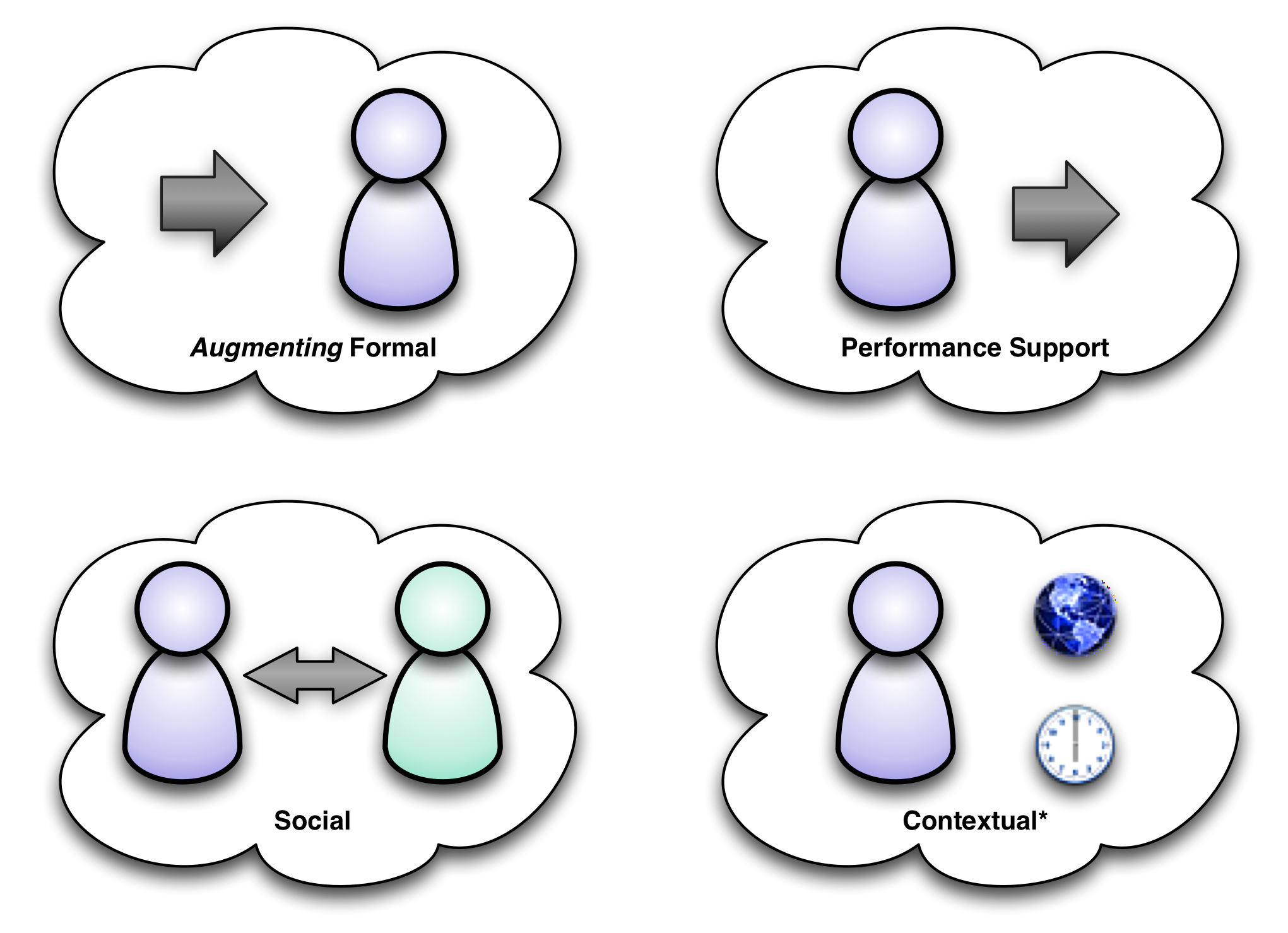In the course of answering a question in an interview, I realized a third quip to complement two recent ones. The earliest one (not including my earlier ‘Quips‘) was “curation trumps creation”, about how you shouldn’t spend the effort to create new resources if you’ve already got them. The second one was “from the network, not your work”, about how if your network can have the answer, you should let it. So what’s this new one?
While I’ve previously argued that good learning design shouldn’t take longer, that was assuming good design in the first place: that you did an analysis, and concept and example design and presentation, and practice, not just dumping a quiz on top of content. However, doing real design, good or bad, should take time. And if it’s about knowledge, not skills, a course doesn’t make sense. In short, doing courses should be reserved for when they are really needed.
Too often, we’re making courses trying to get knowledge into people’s heads, which usually isn’t a good idea, since our brains aren’t good at remembering rote information. There are times when it’s necessary, rarely (e.g. medical vocabulary), but we resort to that solution too often as course tools are our only hammer. And it’s wrong.
We should be trying to put information in the world, and reserve the hard work of course building when it’s proprietary skills sets we’re developing. If someone else has done it, don’t feel like you have to use your resources to do it again, use your resources to go meet other needs: more performance support, or facilitating cooperation and communication.
So, for both principled and pragmatic reasons, you should be looking to resources as a solution before you turn to courses. On principle, they meet different needs, and you shouldn’t use the course when (most) needs can be met with resources. Pragmatically, it’s a more effective use of your resources: staff, time, and money.
#itashare
